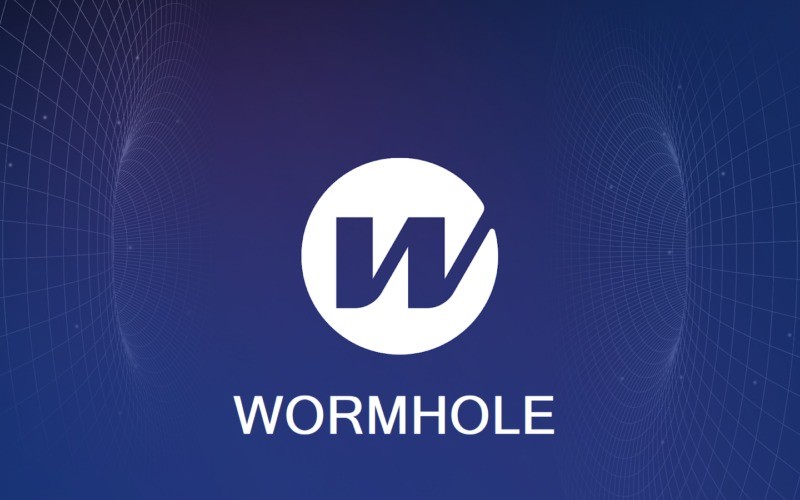Blockchain technology has revolutionized how value and data are transferred across digital platforms. Yet, one of users’ biggest challenges is moving assets between different blockchain networks without friction. This is where Wormhole (W), a cross-chain protocol, comes into play. By bridging blockchains, Wormhole allows the seamless transfer of tokens and data, ensuring that decentralized applications (dApps) and users can benefit from interoperability.
Wormhole’s goal is to eliminate barriers between various ecosystems, creating a network that enables efficient and secure movement of digital assets. Let’s join Argoox and delve into the history, vision, and key features that make Wormhole (W) a unique player in the blockchain space.
History and The Vision Behind Wormhole (W)
Wormhole (W) was created to address a pressing issue in blockchain technology: interoperability. With a growing number of blockchain platforms like Ethereum, Solana, and Binance Smart Chain, users needed help transferring assets across different networks. The developers behind Wormhole recognized this gap and envisioned a cross-chain protocol that would securely and efficiently bridge blockchains.
Wormhole’s mission is to create a decentralized, trustless system where users can seamlessly move assets between chains without relying on centralized exchanges. Its vision centers on building a more connected, interoperable blockchain world where networks work together to enhance scalability and user experience.
Who is the Founder of Wormhole (W)?
Wormhole (W) was developed by Certus One, a well-known blockchain infrastructure company specializing in building decentralized systems. In fact, the project was a collaborative effort from a team of experts in blockchain technology, aiming to create a bridge between different blockchains that could scale with the growing decentralized finance (DeFi) ecosystem.
What is the Primary Function of the Wormhole W Token?
The primary function of the Wormhole (W) token is to facilitate and secure cross-chain transfers. It acts as a utility token, enabling users to transfer assets across different blockchain networks through the Wormhole protocol. Additionally, W tokens may be used for governance purposes, allowing holders to participate in decision-making regarding the protocol’s future developments.
What is Wormhole (W) Used For?
Wormhole is used primarily for cross-chain transfers. It enables users to move assets from one specific blockchain to another without the need for centralized exchanges or cumbersome processes. The protocol also facilitates decentralized applications (dApps) by providing an interoperable platform where developers can build services that function across multiple chains. For example, Wormhole can transfer tokens, NFTs, and data between Ethereum, Solana, Binance Smart Chain, and more.
How Does Wormhole (W) Work?
Wormhole operates by utilizing a network of “guardians” who monitor multiple blockchains. When a user needs to transfer an asset from one chain to another, the guardians verify the transaction, locking the asset on the source chain and minting an equivalent token on the destination chain. This system ensures that the process is secure and trustless, as no single entity controls the protocol.
For instance, if a user wants to move an Ethereum-based token to Solana, Wormhole locks the token on Ethereum and issues a wrapped version of the token on Solana. This allows for efficient cross-chain transfers without the risk of losing assets.
Read More: How To Make Wormhole (W) Trading Bots?
Why is Wormhole (W) Unique?
Wormhole stands out in the blockchain world due to its seamless interoperability. Unlike traditional cross-chain protocols that rely on centralized bridges or third-party platforms, Wormhole is decentralized and trustless. Its innovative approach allows for the secure movement of assets across blockchains while maintaining high levels of security and efficiency.
Another unique feature of Wormhole is its ability to support multiple types of assets, from fungible tokens to non-fungible tokens (NFTs). This flexibility makes it a go-to solution for projects that require cross-chain asset transfers.
Key Features of Wormhole (W)
- Cross-Chain Transfers: Wormhole enables the movement of assets between different blockchains, allowing users to transfer tokens and data without centralized exchanges.
- Decentralized and Trustless: The protocol operates decentralized, ensuring that no single entity controls the transfers, reducing the risk of manipulation or fraud.
- Multi-Asset Support: Wormhole supports both fungible tokens (e.g., cryptocurrencies) and non-fungible tokens (NFTs), making it versatile for various use cases in decentralized finance and gaming.
- High Security: The use of “guardians” to monitor transactions ensures that transfers are secure and that assets are safely locked on the source chain before being minted on the destination chain.
Advantages of Using Wormhole (W)
- Efficiency: Wormhole reduces the time and complexity associated with cross-chain transfers, allowing users to move assets quickly and without intermediaries.
- Security: The decentralized and trustless nature of Wormhole ensures that assets are secure during the transfer process.
- Scalability: Wormhole’s support for multiple blockchains allows for greater scalability, enabling developers to build dApps that function across different networks.
- Interoperability: Wormhole enables seamless interaction between blockchains, enhancing the overall user experience (UX) and expanding the capabilities of decentralized applications.
How to Buy and Store Wormhole (W)?
To buy Wormhole (W), users can visit various cryptocurrency exchanges that list the token. After purchasing, storing Wormhole tokens is easy with compatible wallets like MetaMask or Trust Wallet. Moreover, these wallets enable users to securely hold their Wormhole tokens and interact with the protocol to facilitate cross-chain transfers.
Is Wormhole (W) Secure?
Wormhole is considered secure due to its decentralized and trustless architecture. The protocol uses a network of guardians to verify and monitor cross-chain transfers, ensuring that assets are locked and minted correctly. Moreover, the decentralized nature of the protocol reduces the risk of a single point of failure, enhancing its security.
How to Convert W-Coin to USDT?
Converting W-Coin (the token used within the Wormhole ecosystem) to USDT (Tether) can be done on several decentralized exchanges that support cross-chain functionality. Users can transfer their W-Coin to a supported chain and then use a decentralized exchange (DEX) or centralized exchange (CEX) to swap it for USDT.
Read More: What is Wormhole (W) Trading Bot?
How Do I Invest in Wormhole Crypto?
Investing in Wormhole crypto involves purchasing W tokens from cryptocurrency exchanges that support them. Once you own W tokens, you can hold them in a compatible wallet, participate in governance decisions, or use them for cross-chain transfers.
Which Exchange Has Wormhole (W)?
Wormhole (W) tokens are available on various decentralized and centralized exchanges, including Solana’s native decentralized exchanges and multi-chain platforms like Binance and Uniswap. These exchanges enable their users to buy, sell, and trade Wormhole tokens efficiently.
Conclusion
Wormhole (W) is a revolutionary protocol designed to bridge the gap between different blockchains, providing users and developers with a seamless way to transfer assets across networks. With its decentralized, secure, and trustless approach, Wormhole offers significant advantages in the fast-evolving world of decentralized finance. Whether you’re looking to transfer tokens, build interoperable dApps, or invest in a cross-chain future, Wormhole stands out as a vital solution.
If you’re ready to explore the possibilities of decentralized cross-chain transfers, visit Argoox, a global leader in AI trading bots and financial solutions, and discover how Wormhole can enhance your blockchain experience.
Coin Information:
Website:
Online
Extra Links:
Social Media & News:




